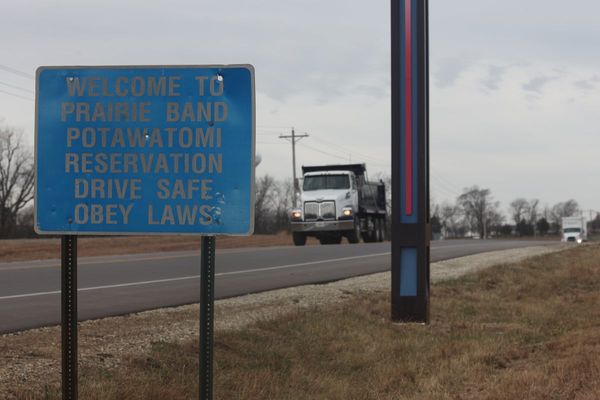The United States is a vast country, and with its size comes an incredible number of churches. In fact, estimates suggest there are between 380,000 and 420,000 across the nation—ranging from soaring cathedrals to humble house gatherings.
Seeing them all in person would be nearly impossible, but we can still appreciate some of the most stunning ones the country has to offer. Luckily, The Culturist has compiled a list showcasing the most spectacular church in every US state.
Scroll down to admire their breath-taking architecture and diversity, and don’t forget to upvote the ones that speak to you most.
#1

Image credits: the_culturist_
#2

Image credits: the_culturist_
Whether you’re religious or not, there’s a lot to be said about the architectural beauty of church buildings.
They’re often some of the oldest and most distinctive structures in any town, and each one tells a story about the community that built it. From small wooden chapels to grand sanctuaries, they reflect how history and culture have evolved over time.
#3

Image credits: the_culturist_
#4

Image credits: the_culturist_
In his 2004 essay A Short History of Church Building, architect Bruce R. Wardell wrote that churches have always been shaped by the people who built them—not just their faith, but their needs, surroundings, and social life.
In early Christianity, there weren’t even buildings at all. People met in homes, creating simple “House-Churches” that were more about gathering safely than architectural style.
#5

Image credits: the_culturist_
#6

Image credits: the_culturist_
#7

Image credits: IconicSettings
As Christianity spread and eventually became recognized by the Roman Empire, these gatherings evolved into purpose-built spaces. That’s when the basilica design appeared, with long, open halls, high ceilings, and natural light.
Originally used for Roman public buildings, the basilica was adapted for worship to accommodate larger congregations and to emphasize a clear central axis leading toward the altar, symbolizing the spiritual path toward God.
#8

Image credits: the_culturist_
#9

Image credits: theagroboybob
#10

Image credits: the_culturist_
Over time, new styles began to develop across Europe. After the fall of Rome, Wardell explains, Christianity started moving away from politics and material power toward ideas of eternity and spiritual meaning.
The monastery became central, not just as a religious place, but as a model for how an entire community could be built around faith. This period gave rise to what became known as the Romanesque era, known for the reappearance of a strong and permanent civic order.
#11

Image credits: the_culturist_
#12

Image credits: the_culturist_
#13

Image credits: the_culturist_
Over the following centuries, this approach developed further into the Gothic style. The idea of God as a constant presence became more apparent, and that belief was expressed through taller, more open spaces.
Vertical lines, clerestory windows, and vaulted ceilings created a sense of height and lightness, helping people feel closer to something beyond themselves. In Gothic cathedrals, Wardell writes, God felt immediate, and the building itself became a way to communicate that directly.
#14

Image credits: the_culturist_
#15

Image credits: the_culturist_
#16

Image credits: the_culturist_
During the Renaissance, reason and faith began to share space in architecture. Citing Christian Norberg-Schulz, Wardell explains that people no longer saw divine perfection as something separate from the world, but as something present in nature and human order.
Church design incorporated symmetry, proportion, and geometry, and churches often stood alongside civic buildings, representing both spiritual and communal life.
#17

Image credits: the_culturist_
#18

Image credits: the_culturist_
#19

Image credits: the_culturist_
Fast-forward a few centuries, and the influence of European church architecture started to take root in America. When settlers began arriving from England and other parts of Europe, they brought their architectural traditions with them.
But America’s early churches looked very different from the grand cathedrals of Europe. According to Wardell, the first meeting houses in New England were plain and practical, due to modest budgets and the Puritan preference for simplicity.
These early churches doubled as community centers, where townspeople gathered not only for worship but also for discussions, education, and local government meetings. Wardell noted that this flexibility helped define the uniquely American approach to church architecture.
#20

Image credits: the_culturist_
#21

Image credits: the_culturist_
#22

Image credits: the_culturist_
As settlements grew into towns and cities, church buildings began to take on a more symbolic role. Their design started to reflect the values of the growing nation: democracy, unity, and civic pride. Neo-classical styles became popular, borrowing from Greek and Roman architecture to convey a sense of order and stability.
In the 18th and 19th centuries, more denominations emerged, and so did new architectural styles. From Gothic Revival spires to Romanesque stone arches, churches became markers of identity for different communities. Immigrant groups brought their own traditions—Scandinavian Lutherans, Italian Catholics, Eastern Orthodox congregations—each leaving an imprint on the American landscape.
#23

Image credits: the_culturist_
#24

Image credits: the_culturist_
#25

Image credits: the_culturist_
By the time suburbs began expanding in the 20th century, church design started adapting again. Wardell pointed out that new congregations faced a different kind of challenge: how to build churches that felt meaningful in modern settings, surrounded by parking lots and highways instead of village squares. Some turned to contemporary designs with minimalist lines and open layouts, focusing on flexibility and accessibility rather than grandeur.
Even today, that tradition continues. American churches come in every shape and size, from historic stone buildings and repurposed movie theaters to modern glass structures. But as Wardell observed, one thing hasn’t changed: they still serve as focal points for communities, offering connection and belonging in an ever-changing world.
#26

Image credits: the_culturist_
#27

Image credits: TheCityMentor
#28

Image credits: the_culturist_
#29

Image credits: the_culturist_
#30

Image credits: the_culturist_
#31

Image credits: the_culturist_
#32

Image credits: the_culturist_
#33

Image credits: the_culturist_
#34

Image credits: the_culturist_
#35

Image credits: the_culturist_
#36

Image credits: the_culturist_
#37

Image credits: the_culturist_
#38

Image credits: the_culturist_
#39

Image credits: the_culturist_
#40

Image credits: the_culturist_
#41

Image credits: the_culturist_
#42

Image credits: the_culturist_
#43

Image credits: the_culturist_
#44

Image credits: the_culturist_
#45

Image credits: the_culturist_
#46

Image credits: the_culturist_
#47

Image credits: archi_tradition
#48

Image credits: IconicSettings
#49

Image credits: Jeffrey47111267
#50

Image credits: BraneDamaged
#51

Image credits: the_culturist_
#52

Image credits: the_culturist_
#53

Image credits: the_culturist_
#54

Image credits: the_culturist_
#55

Image credits: motherkia
#56

Image credits: Graves1390
#57

Image credits: the_culturist_
#58

Image credits: the_culturist_
#59

Image credits: curiositybrief
#60

Image credits: designnwine
#61

Image credits: StarfishLBK
#62

Image credits: the_culturist_
#63

Image credits: the_culturist_
#64

Image credits: salt_mine_tech







